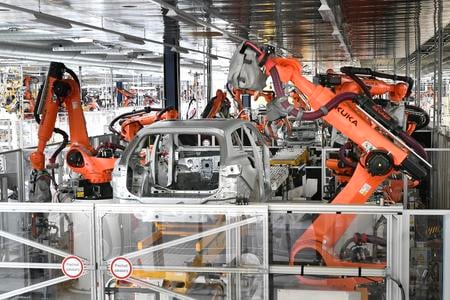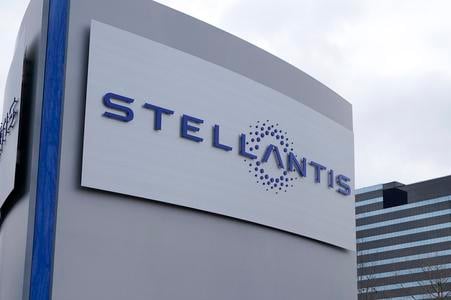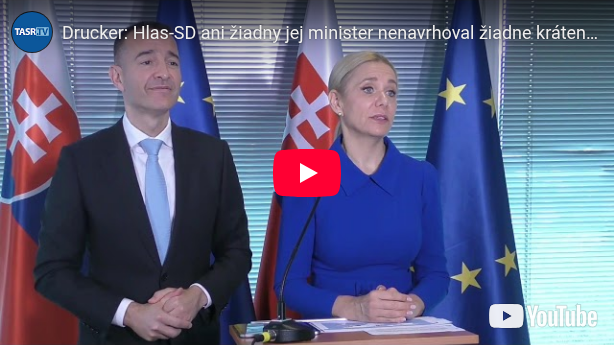Slovakia’s automotive industry, the engine of its export economy, is already feeling the chill of newly announced US tariffs – even before they formally take effect.
Carmakers including Volkswagen and Jaguar Land Rover have reported a noticeable drop in orders for the third quarter of this year, Economy Minister Denisa Saková (Hlas) said following an emergency cabinet meeting on Friday. While precise figures remain undisclosed – and may be protected as trade secrets – the impact is real, she warned.
“We are already seeing a downturn in orders, and the negative effects have started to show,” she told reporters.
New tariff, old partner
The tariffs, introduced by the administration of Donald Trump in his second term, raise import duties on cars to a steep 27.5 percent, up from a long-standing 2.5 percent. Although a 25 percent levy is not yet in force, the mere prospect of it has unsettled the market. Saková said that negotiations between the European Union and the United States, led by European Commissioner Maroš Šefčovič, had so far made no meaningful progress.
The US is Slovakia’s second most important automotive export market, accounting for more than 10 percent of all car exports. For Volkswagen and JLR, that share rises to as much as a quarter.
“This is a mid- to long-term challenge,” Saková said, brushing aside fears that production could simply be relocated to the US. “Relocating production is a four- to six-year process. It’s not something that can happen overnight.”
Slovakia, a country of just over five million people, is the world’s largest car producer per capita. Four major car manufacturers – Volkswagen, Stellantis, Kia and Jaguar Land Rover – operate production plants in the country. A fifth, Volvo, is preparing to begin operations at its new facility in Valaliky in 2026, with full production expected the following year. The sector accounts for roughly 10 percent of GDP and nearly half of Slovakia’s total exports.
According to Slovakia’s central bank, the American trade policy shift could drag down the country’s GDP by as much as 2.9 percent – two-thirds of that due to hits to the car industry alone. Automakers generate roughly 10 percent of Slovakia’s GDP and directly employ about 128,000 people, with another 100,000 in related supply chains.
But US tariffs are not the only threat. China – the world’s dominant supplier of rare earth elements crucial for EV production – introduced export licensing requirements in April for seven of these critical materials, including samarium, gadolinium, terbium and dysprosium. While not a ban, the opaque and unpredictable licensing process poses risks for automotive supply chains. Shortages could delay or disrupt vehicle manufacturing across Europe, including in Slovakia.
Saková has been tasked with coordinating talks with China on the export of rare earth materials vital for EV battery production.
New US legislation could pose further risks to Slovakia’s car industry
A new US law on connected vehicles, in effect since 17 March 2025, introduces significantly stricter conditions for the sale of internet-enabled vehicles. The legislation – Securing the Information and Communications Technology and Services Supply Chain: Connected Vehicles – aims to enhance cybersecurity and data protection by targeting both hardware and software systems that support connectivity and autonomous driving.
It bans the import and sale of vehicles using connected vehicle systems (VCS) or automated driving systems (ADS) that were designed, developed, manufactured or supplied by entities owned or controlled by China or Russia, including those under their jurisdiction. The restrictions will apply to software from model year 2027 and to hardware from model year 2030 – even for vehicles produced in the United States.
For manufacturers operating in Slovakia, this could mean major administrative burdens, increased costs and disruption to supply chains, particularly for those reliant on Asian technology providers such as Volvo Cars. A key concern is the ambiguity over how jurisdiction is defined. If interpreted broadly, even partial Chinese or Russian ownership of a supplier could lead to a ban, creating serious risks for several carmakers based in Slovakia.
Source: Report on the Current State of the Automotive Industry in Slovakia
Industry calls for action, not promises
In response to these mounting challenges, the government approved 15 targeted measures on Friday, ranging from revised investment aid rules to incentives for low-emission vehicle procurement. A new report on the state of the industry warns of the “deepest transformation in its history” and pledges that Slovakia will remain “a place where the automotive sector will not only stay, but continue to grow.”
Alexander Matušek, president of the country’s automotive industry association ZAP, welcomed the plans but stressed the need for follow-through.
“We’ve had promises before. But now we’ve heard it directly from the prime minister,” he said, calling for a technical working group with ministries to draw up a roadmap.
Despite optimistic forecasts for an eventual production rebound – to 1.27 million vehicles annually by 2027 – concerns persist. Slovakia’s competitiveness, Matušek warned, is slipping. High taxes, mandatory leisure vouchers and a transaction tax are deterring investors.
“It’s time to shift support back to the productive part of society,” he said.





